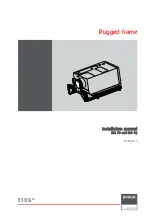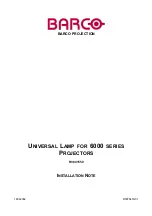
FAAST 8251BPI and 8100
INSTALLATION AND MAINTENANCE INSTRUCTIONS
9
Table 3: Alarm Level Programmable Ranges
Alarm
Level
Threshold
High Sensitivity
Threshold
High Sensitivity
Current
Level
Alert
Alert High
Alert Low
Acclimate Alert Level
Action 1
Action 1 High
Action 1 Low
Acclimate Action 1 Level
Action 2
Action 2 High
Action 2 Low
Acclimate Action 2 Level
Fire 1
Fire 1 High
Fire 1 Low
Acclimate Fire 1 Level
Fire 2
Fire 2 High
Fire 2 Low
Acclimate Fire 2 Level
Day, Night and Weekend Mode
If Acclimate mode is not desired, the FAAST system can
operate in a simple Day, Night and Weekend mode. This
allows the device to have separate threshold levels for
each state. Times can be configured for entering and
leaving day and night time operation. The device has an
internal time reference (clock) and automatically switches
to the weekend mode for Saturday and Sunday.
Isolate
Isolate mode is initiated by pressing and releasing the
ISOLATE button on the user interface when the button is
enabled (refer to the passcode section). When the
ISOLATE button is activated the FAAST system resets
the Fault and Alarm relays. It then sets the Isolate relay
and the ISOLATE Fault indicator illuminates on the user
interface. In this mode the device operates normally but
will not activate relays for any Alarm or Fault levels
(except the Isolate relay). Fire and Fault events can still
be seen on the user interface and the web server sends
email notification of events, if enabled. Isolate mode will
be held through Resets and power outages. The device
will remain in Isolate mode until removed by pressing the
ISOLATE button. Isolate mode may be enabled and
disabled using Monitoring mode in PipeIQ.
Disable
Disable mode is initiated by pressing and holding the
ISOLATE button on the user interface for 3 seconds
when the button is enabled (refer to the Passcode
section). When the ISOLATE button is activated, the
FAAST system resets the Fault and Alarm relays. It then
sets the Isolate relay and the ISOLATE Fault indicator
illuminates on the user interface. In this mode the fan
switches off and the device does not report any Alarm or
Fault levels on the user interface or activate any relays
(except the Isolate relay). This mode should only be used
when the system needs to be taken off-line. This mode
will be held through Resets and power outages. The
device will remain in Disable mode until removed by
pressing the ISOLATE button. Disable mode cannot be
enabled or disabled using Monitoring mode in PipeIQ.
Acclimate
The FAAST system includes an Acclimate mode. Using
A
cclimate mode, a device’s susceptibility to nuisance
alarms can be reduced providing maximum protection for
a device located in changing environments. The
sensitivity of the unit continuously adjusts over time,
within the set limits as the local environment changes.
Acclimate mode must be activated and configured
using
PipeIQ
In Acclimate mode the device automatically adjusts the
alarm point between a specified minimum and maximum
sensitivity, programmed by the user. For the first 24
hours of operation the device monitors its environment.
After the initial 24 hour period, the device adjusts the
alarm point based on the particulate levels over a rolling
1 hour period. It then adjusts the alarm level starting from
the insensitive boundary, based on the stability of the
environment being monitored.
Setting Acclimate Mode
The user chooses the boundaries for each alarm level in
the Acclimate mode. The FAAST system starts from the
insensitive boundary and adjusts itself to stay within the
sensitive boundary.
It is also possible to have a static
alarm level by adjusting the high and low boundary to the
same level. This allows the flexibility to maintain
acclimating levels for some alarms and static levels for
others. Table 3 shows the various levels that are
available.
Each Acclimate level is also available for monitoring with
the PipeIQ tool. This allows the user to read the current
Acclimated alarm level for each alarm
.










































